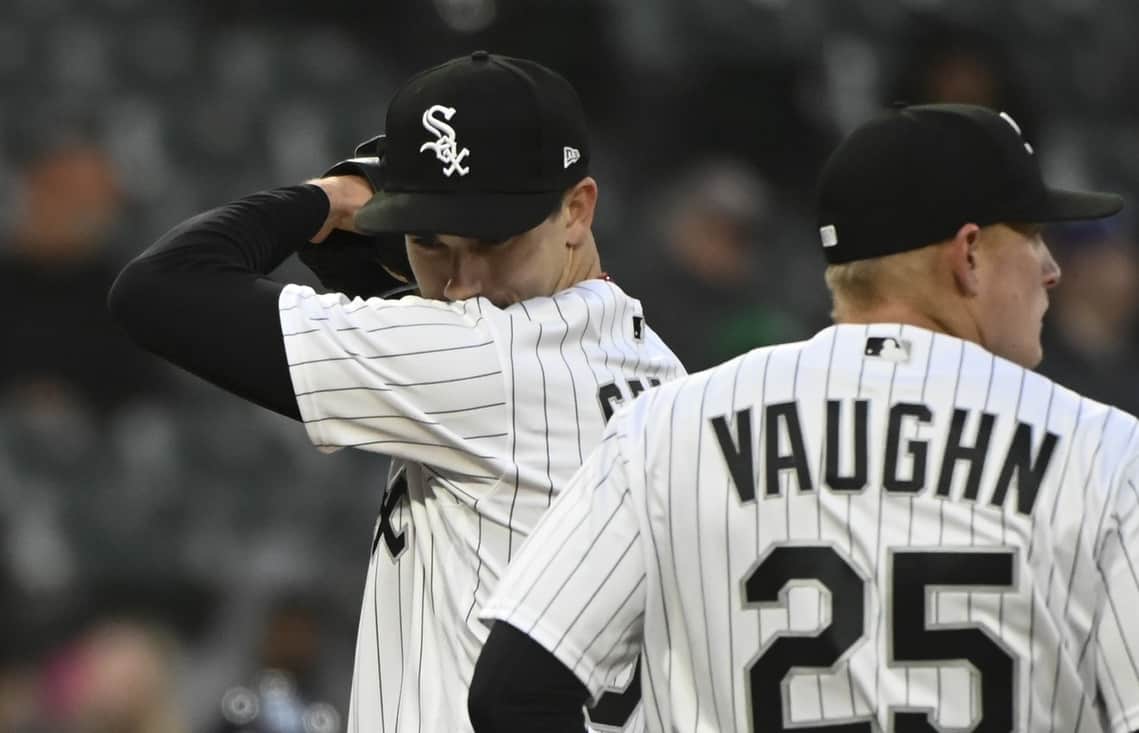Before we get into my corner-cutting post, there's a valid reason for it: I've been putting the finishing touches on the Sox Machine curling event registration, which goes live this morning at 10 a.m. CT. If you support Sox Machine on Patreon, check your email or the Patreon page at that time for information on how to grab a spot. If you don't yet support Sox Machine, now's a good time to do so.
Now, baseball stuff:
Ken Rosenthal provided the most recent updates-that-might-not-really-be-updates on Dylan Cease's trade market.
New White Sox general manager Chris Getz is telling clubs he likely will wait to move on right-hander Dylan Cease until after the top free-agent starting pitchers sign, according to major-league sources briefed on the discussions.
Getz could act sooner if gets an offer to his liking, perhaps from a team such as the Orioles or Reds, who are expected to refrain from the top of the free-agent market. But the advantage of waiting is obvious: The urgency of certain teams only will increase if they miss out on Yamamoto, Blake Snell and Co. Some clubs face such an acute shortage, they might be in on Cease even if they sign a top free agent.
Rosenthal could be correct that Getz is saying these things, but each sentence basically negates the significance of the one that came before.
- Getz will likely wait to move Dylan Cease until after the top free agents sign.
- He could act before that urgency arrives if he gets an offer to his liking.
- The urgency of the bidding could rise if teams can't land a top arm.
- The urgency might be there already because many teams need two such arms.
And the hem-hawing, see-sawing is valid because I think that thought process more applies to a pitcher like Tyler Glasnow, whose market is seemingly limited because he's owed $25 million for 2024, then becomes a free agent afterward. If teams swing and miss on their longer-term solution, then maybe Glasnow is a fine option for a patch, and more teams turn his way.
With Cease, he's owed significantly less money over the next two years than any other comparable option. That would seem to do 90 percent of his market-defining, and where the other free agents land strike me as minor ripples by comparison.
Spare Parts
I've mentioned before that this winter's managerial shifts features a few different managerial archetypes -- the active proven winners (Craig Counsell, Bob Melvin), the back-in-the-game veteran (Ron Washington), the inexperienced former catcher (Stephen Vogt), and the long-tenured assistant (Joe Espada). The variety of backgrounds gives Brittany Ghiroli a timely way to examine the various ways teams settle on their next manager. Sadly, Pedro Grifol isn't mentioned, probably because the guy who hired him was fired.
Ben Clemens provides another good overview of what the collapse of the RSN model means for baseball teams. It's probably not good -- especially for smaller market teams -- but he does provide some reason for optimism among all the angst:
What’s more, baseball viewership isn’t stuck in the same interminable downward spiral as cable subscriptions. While subscriptions have declined, RSNs continue to boast strong viewer numbers. Cord-cutting hurts overall cable subscriptions, but the people leaving cable were mostly paying for baseball and not watching it. It’s clear that the sport has a strong base of fans interested in watching local broadcasts; the real question facing teams is how they plan on making money by broadcasting the games.
There’s even more reason for optimism: the league might be able to expand viewership in markets where it reclaims broadcast rights. Carriage fee disputes and pre-existing deals limited the available number of subscribers, a problem that direct team ownership of broadcasts could possibly solve. The league’s openness to relaxing blackout restrictions for in-market streaming will also allow it to reach more viewers. The streaming technology is there already courtesy of MLB.TV, and the league is already building out a local broadcast arm, headed by former DSG executive Billy Chambers, to manage the continued rollout.
There aren't any White Sox on this list, although former White Sox employee Ben Hansen made the list (he's now a biomechanical expert with the Mets). Sam Mondry-Cohen was listed as an honorable mention.
Dan Szymborski delivered the first set of projections for an AL Central team, and while the Tigers project unimpressively, there are multiple legitimate ways to envision upper-percentile scenarios shaking out, which clears the division's very low bar for intrigue.
- Sports Illustrated published articles by fake, AI-generated writers -- Futurism
- Scorn Illustrated -- Defector
It's not surprising that Sports Illustrated became the latest prominent media outlet to get busted for producing a whole bunch of bogus articles with fake writers for the purposes of gaming/gumming up search engines, but it's sad that it's not surprising that Sports Illustrated has fallen so far.






